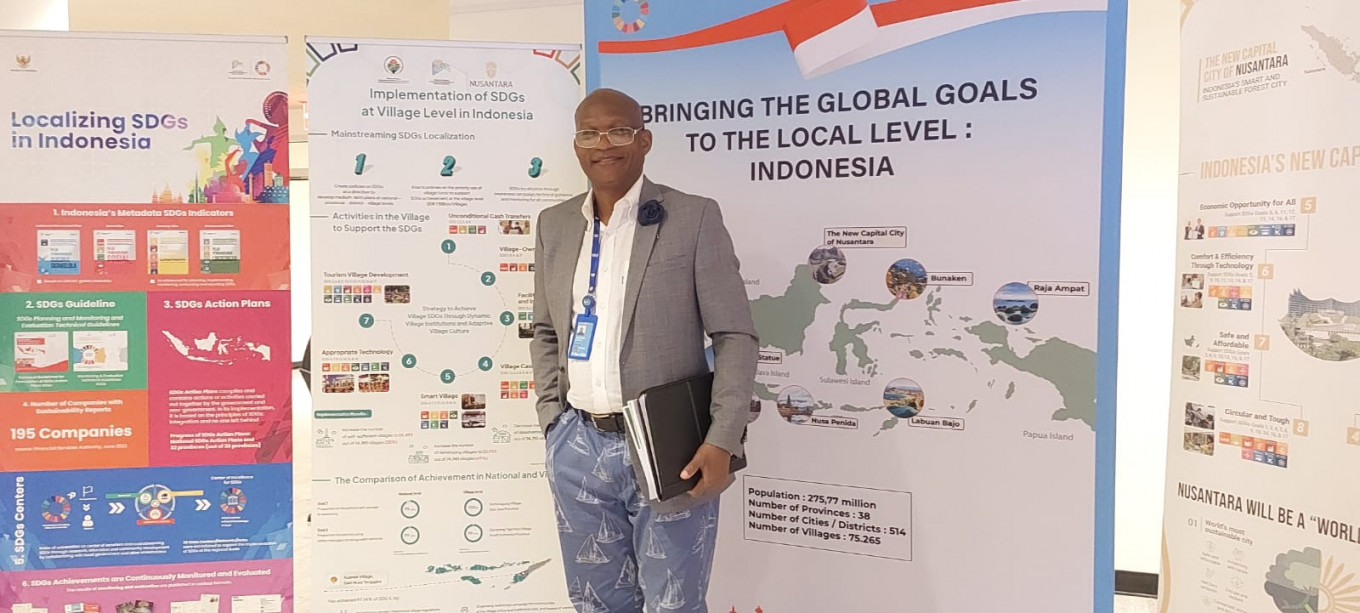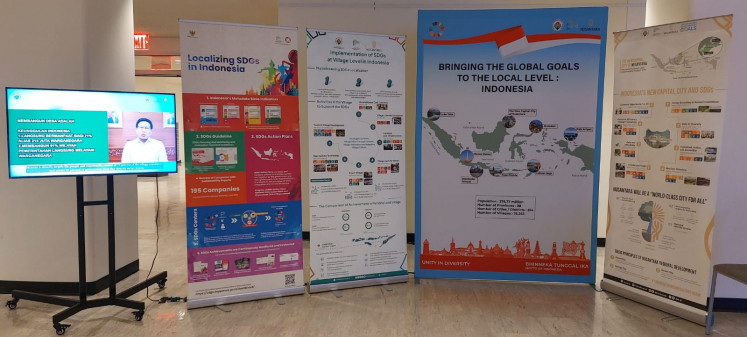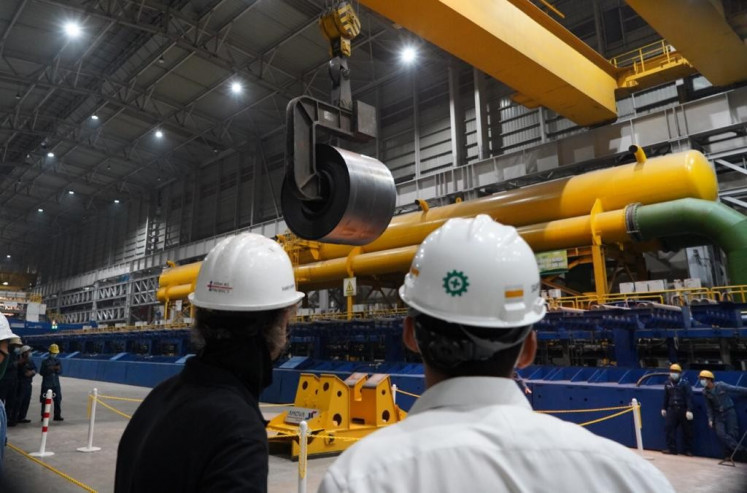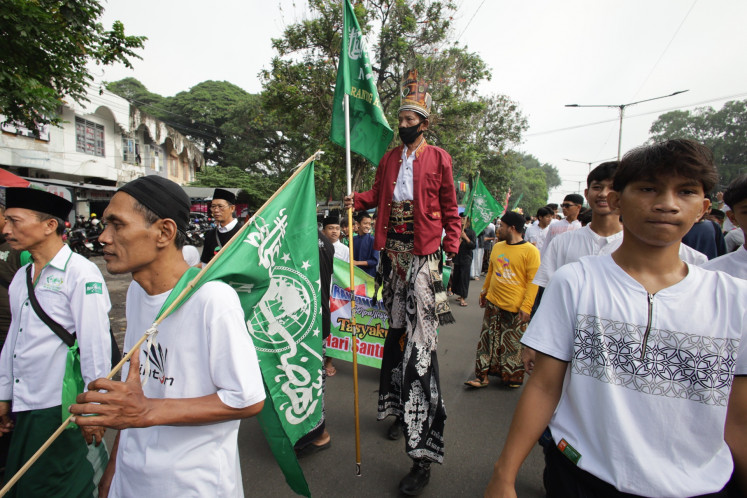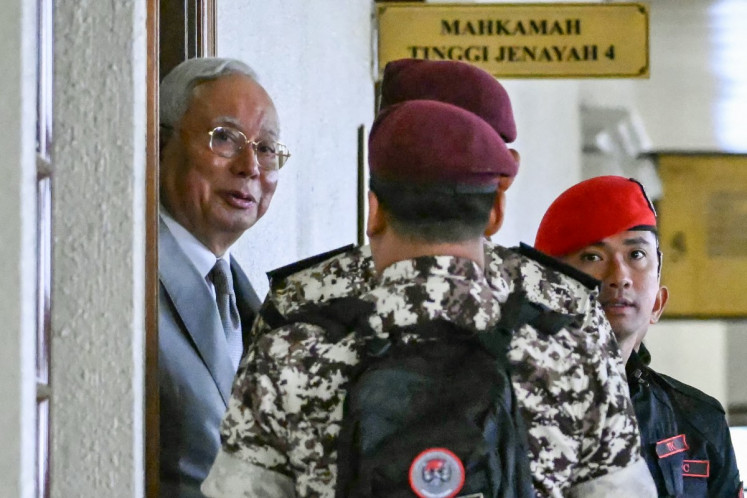Popular Reads
Top Results
Can't find what you're looking for?
View all search resultsPopular Reads
Top Results
Can't find what you're looking for?
View all search resultsIndonesia Exhibits its Achievements in SDG Localization at The UN Headquarters
Change text size
Gift Premium Articles
to Anyone
C
urrently, Indonesia’s efforts of localizing the Sustainable Development Goals (SDGs), at the national, provincial, district/city and village levels are being showcased at the United Nations Headquarters in New York, the United States, during the High-Level Political Forum on Sustainable 2023 event taking place from July 10-20, 2023.
Attended by a curated roster of 11 countries, the event is meant to display the exemplary work of countries that have managed to enact programs that expedite their progress toward the SDGs.
Theresia Junidar, head of the Data and Information Center at the Villages, Disadvantaged Regions and Transmigration (PDTT) Ministry, explained, "The exhibition contains good practices produced by the PDTT Ministry, Bappenas [the National Development Planning Agency] and the National Capital Region Authority."
The main screen at the event showcases an overview of Indonesia’s performance. Highlighting the archipelago's demographics, which consists of 270 million inhabitants living in 75,265 villages, 38 provinces and 514 districts/cities. Culturally rich regions such as Lake Toba, North Sumatra, Borobudur in Magelang, Central Java, Bali, and Labuan Bajo, East Nusa Tenggara (NTT), are also featured.
The villages ministry also emphasized the importance of SDG localization down to the village level. This can be achieved through the mainstreaming of Village SDGs as the policy direction for rural development until 2030. This policy direction is supported by a large amount in village funds transferred to all villages in Indonesia. In 2023 alone, the total amount reached Rp 70 trillion (US$4.68 billion). Village SDGs are further promoted through publications and capacity-building for village administrators.
Moreover, the activities found in villages that support village SDGs are showcased, one of them being the Village Fund Transfer Program (BLT Dana Desa), which supports the goals of poverty-free villages, hunger-free villages and healthy and prosperous villages. There is also the empowerment of Village-Owned Enterprises, infrastructure development, cash-for-work programs in villages, smart villages, the strengthening of appropriate technology in villages and the development of village tourism.
The extent of SDG localization on the village level is demonstrated through improvement of Indonesia’s sustainable development indicators. For example, at the national level, 99.45 percent of Indonesian households have access to electricity, while in the SDG village of Sumur Agung, East Java, electrification reaches 100 percent.
This article was published in collaboration with Ministry of Village, Development of Disadvantaged Regions and Transmigration

